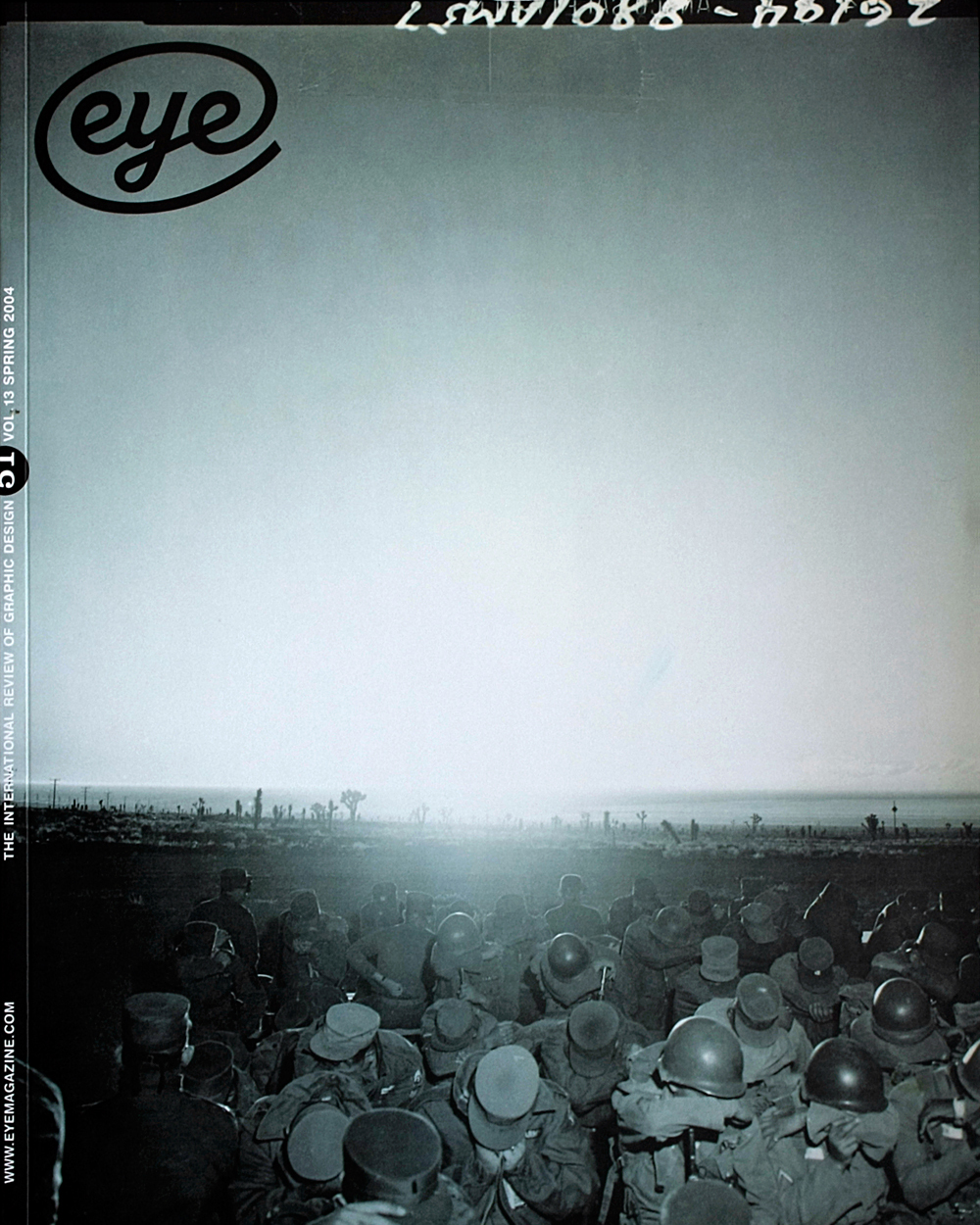Spring 2004
The end of typography: slow death by default
Designing for the partially sighted: misguided guidlines
Approximately two million people in Britain have some form of sight problem. With the average age of the population increasing, this number can only grow. So in recent years, various guidelines have been published and circulated in order to encourage graphic designers to do things differently when preparing material for people with a visual disability. Since the Disability Discrimination Act (DDA) of 1995 brought some force of law to these matters, several publications have attempted to tackle the issue.
i2i, produced by Action for Blind People, is a twelve-page set of guide-lines ‘for producing printed materials that are accessible for people who are blind or partially sighted’. Produced in 2002 (‘to present the top level information of more detailed guide-lines established by the Royal National Institute for the Blind’ [RNIB]) it was initially distributed only in response to enquiries. Now it is being distributed more actively, and a copy was sent to Eye for consideration. Sadly, i2i is disturbing for several reasons and, if taken literally, will result in work of great typographic mediocrity . . .
. . . worst of all, it is inaccurate as a synopsis of other fuller presentations of current thinking in this field. The RNIB produces an information pack called See it right, twelve booklets covering various aspects of making printed information accessible. The difference – in tone and content – between these booklets and i2i is striking. RNIB makes a distinction between clear and large print, and guidelines are presented as just that, guidelines with rational explanations and recommendations for their use . . .
. . . After i2i, this is a breath of fresh air, a reasoned and practical presentation of the facts. Where the general over-simplification of facts and hectoring tone of i2i is liable to put off many designers, See it right explains the problem, suggests an ideal and some alternative solutions and gets people on-side. It is certainly not perfect – I noted some errors and points that many designers would disagree with – but as an attempt to explain some of the nuances of typographic practice it is a very good start.
One problem that neither set of guide-lines tackles is that of the dynamic relationships between different aspects of typographic specification. From the point of view of readability the most crucial relationships are those of type size, line length and leading, but the production of legible type will also include a consideration of letter and word space. As designers we were all probably given some rules of thumb at college about this, and have learnt others through experience in the years since. Because we do this day in and day out, we take the subtleties of setting readable running text for granted. But in several examples of work produced according to the RNIB guidelines, the tracking of the typeface – Helvetica – was too tight and the word space too large. Word shapes were in some cases indistinct, and the leading needed to be considerably greater to provide clear lines. The involvement of software designers in continuing research into type legibility might be beneficial.
Two immediate suggestions come to mind. First, there is no good optical reason why the default word space in any program should be larger than that designed by the type designer (particularly as, in my view, most type designers / manufacturers err on the side of caution anyway). Second, a default leading of 150 per cent (rather than 120 per cent) would both meet the guidelines and be ‘positively good’. Thinking about more general document construction, it ought even to be possible to have an optional ‘safe line length’ limit of 70 characters per text box, which could automatically respond to changes in point size.
For the wellbeing of typography, and to help the needs of the partially sighted, it is vital that we, as designers, become more involved in these issues, and ensure that guidelines don’t become rules, and that the defaults that everyone uses have some genuine typographic reasoning behind them.
Phil Baines, designer, tutor of typography, Central St Martins, London
Further reading:
i2i is published by Action for Blind People, www.afbp.org
See it right, a pack of twelve booklets covering various aspects of making information accessible is available for £20 from the Royal National Institute for the Blind [RNIB], www.rnib.org.uk
For current research into this whole area see www.tiresias.org
Eye is the world’s most beautiful and collectable graphic design journal, published for professional designers, students and anyone interested in critical, informed writing about graphic design and visual culture. It is available from all good design bookshops and online at the Eye shop, where you can buy subscriptions and single issues.

